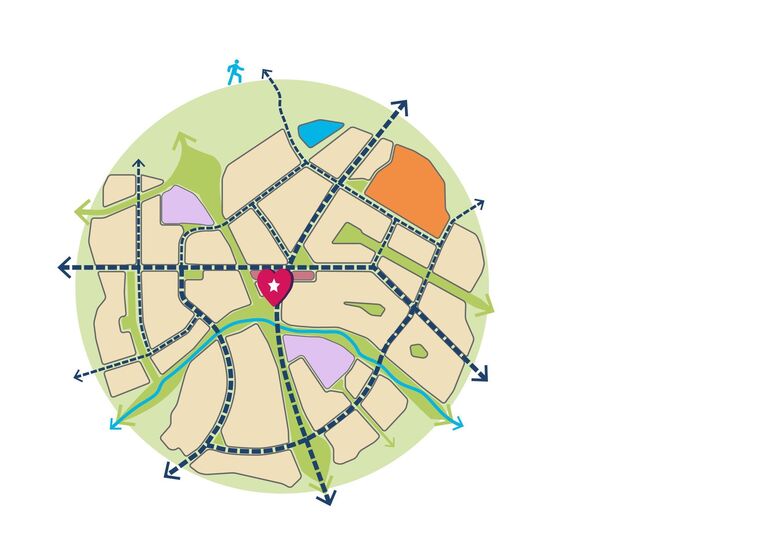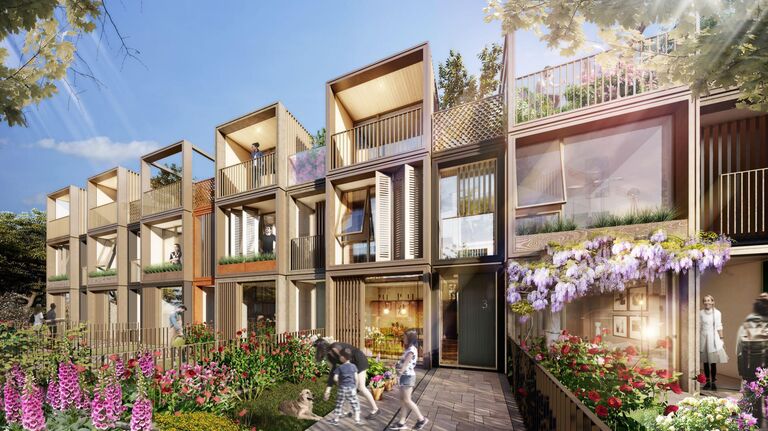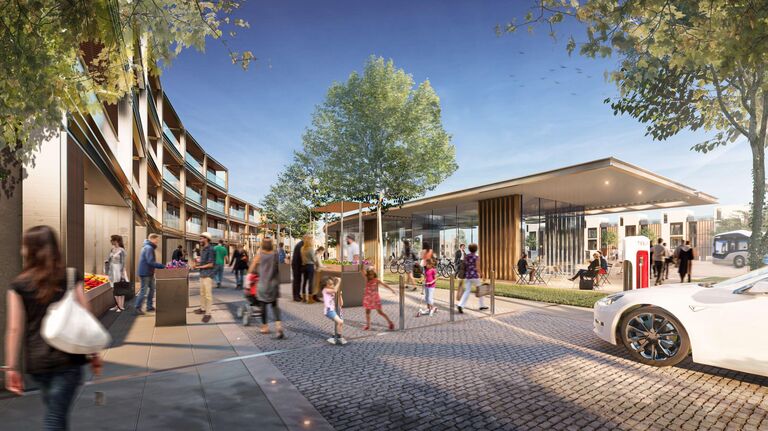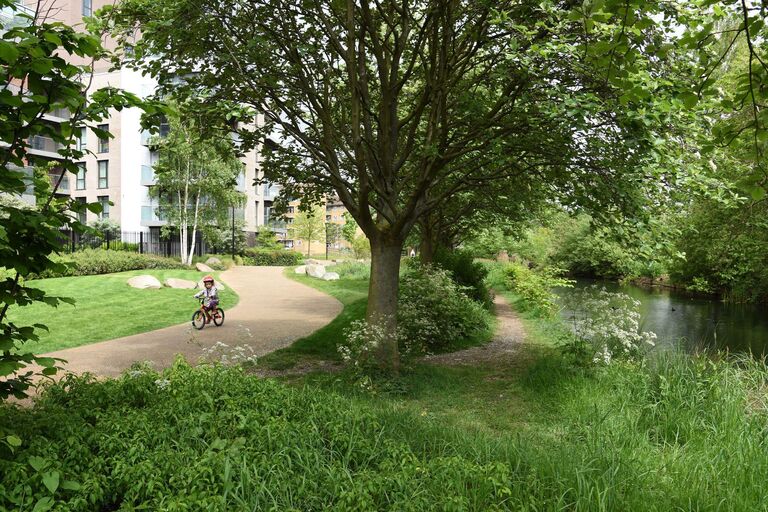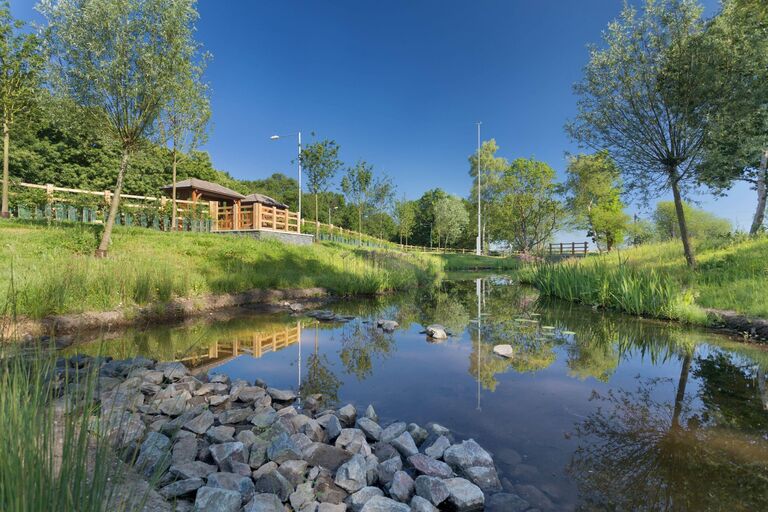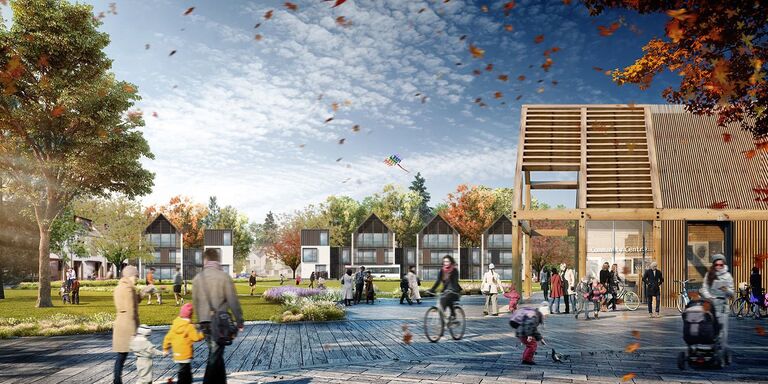Taking inspiration from places such as Vauban in Freiburg, Germany, Broadway Malyan sees the ‘village of the future’ as an effective antidote to the housing crisis, creating environmentally, socially, economically and culturally sustainable places for people to live, work and play in England and beyond.
Although set in beautiful environments, many idyllic English country villages are not as environmentally friendly or economically accessible as their city counterparts. Current challenges facing villages are:
- Expensive properties
- Lack of employment (due to downturn in local industries)
- Absence of adequate educational facilities (village school closures)
- Lack of amenities forcing people drive to shops, healthcare providers, restaurants etc.
- Unreliable internet connectivity
- Non-eco-friendly housing
Reimagined Village tackles these issues and more head on to ensure the future village is a valid economic force in its own right – connected, smart, and green, housing a diverse and healthy community of residents and businesses in a unique, attractive and genuinely sustainable setting.
The report centres on 7 key elements to the village of the future:
